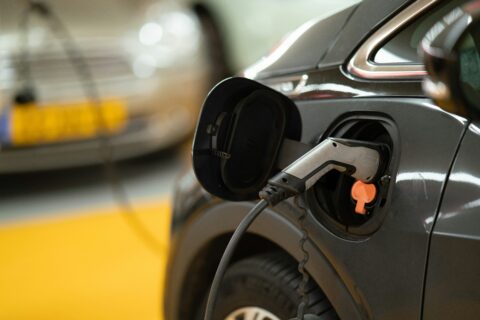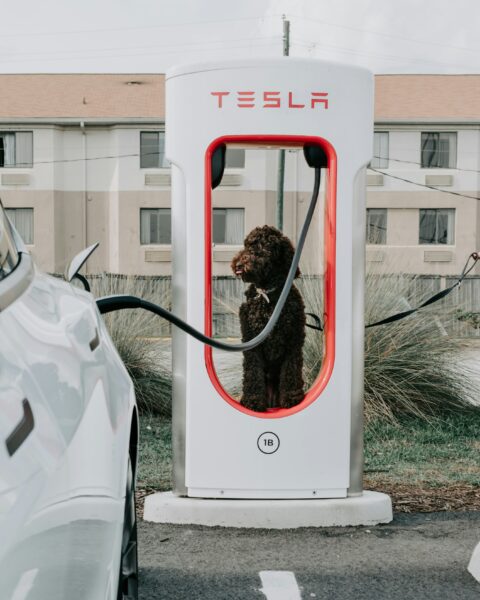Introduction: The importance of transportation in society
Welcome aboard as we embark on a thrilling journey through the evolution of transportation! From the humble beginnings of horse-drawn carriages to the futuristic concept of hyperloop technology, transportation has played a pivotal role in shaping our society. It has connected people, bridged distances, and fueled progress like no other invention. So fasten your seatbelts (or hold on tight) as we explore how this essential aspect of human civilization has transformed over time. Get ready for an exciting ride through history!
Early forms of transportation: Horse-drawn carriages, boats, and trains
Transportation has come a long way since the days of horse-drawn carriages, boats, and trains. These early forms of transportation were essential in shaping the world we live in today.
Imagine a time when horses were the primary mode of transport on land. Horse-drawn carriages provided a means for people to travel from one place to another, albeit at a slower pace than what we are accustomed to now. The sound of hooves clattering on cobblestone streets and the sight of elegant carriages rolling by must have been quite a spectacle.
On water, boats played an integral role in trade and exploration. From simple rafts used by ancient civilizations to majestic ships that traversed vast oceans, boats allowed humans to conquer new territories and connect with distant lands. They opened up opportunities for cultural exchange and economic growth.
Then came the invention of trains, which revolutionized transportation altogether. With their steam engines powering them forward, trains could carry large numbers of passengers and goods across great distances at unprecedented speeds. Railways connected cities and nations like never before, transforming economies and societies along their routes.
These early forms of transportation laid the groundwork for future advancements in mobility that would change our lives forever. While they may seem primitive compared to modern modes of transportations like cars or airplanes, they were instrumental stepping stones towards progress.
So next time you hop into your sleek automobile or board an airplane bound for adventure, take a moment to appreciate how far we’ve come from those humble beginnings – from horse-drawn carriages rumbling through dusty roads to massive ships sailing uncharted waters – all paving the way for the incredible transportation systems we enjoy today
The invention and impact of the automobile
The invention of the automobile was a game-changer in the history of transportation. It revolutionized the way people traveled and had a profound impact on society as a whole.
Before cars came into existence, people relied mainly on horse-drawn carriages for transportation. The introduction of automobiles brought about faster and more efficient means of travel. No longer were people restricted by the speed or endurance of horses, but could now cover long distances in record time.
With the rise of automobiles, cities expanded and suburbs were created as commuting became easier. People no longer had to live close to their workplaces or rely solely on public transportation. This newfound freedom allowed for greater mobility and improved access to opportunities.
Moreover, the automotive industry boomed with manufacturers like Ford leading the way in mass production. Cars became more affordable, making them accessible to a wider range of individuals. This led to an increase in personal ownership and ultimately transformed societies across the globe.
However, along with its advantages came certain challenges. The increased use of automobiles resulted in traffic congestion and pollution problems that still persist today. Efforts have been made to address these issues through advancements such as hybrid and electric vehicles.
It is undeniable that the invention of the automobile has had a lasting impact on our lives. From providing us with freedom and convenience to shaping urban landscapes, cars have truly changed how we navigate through our world
Advancements in air travel: From the Wright Brothers to commercial airlines
Advancements in air travel have revolutionized the way we explore and connect with the world. It all began with two courageous brothers, Orville and Wilbur Wright, who took to the skies for the first time in a powered aircraft back in 1903. Their historic flight lasted just 12 seconds but paved the way for a new era of transportation.
From those humble beginnings, aviation technology rapidly progressed over the years. In the early days, planes were primarily used for military purposes during World War I. However, as time went on, commercial airlines started to emerge and offer passenger flights that opened up a whole new world of possibilities.
The introduction of jet engines in the 1950s was another major milestone in air travel. These powerful engines enabled planes to fly faster and more efficiently than ever before. Suddenly, long-haul flights became feasible and accessible to a larger number of people.
Today’s commercial airlines are marvels of engineering and innovation. They feature state-of-the-art technology like GPS navigation systems, advanced avionics, and even entertainment screens at every seat. Airplanes are now capable of flying farther distances non-stop while ensuring passenger comfort throughout their journey.
Air travel has not only connected people across continents but has also played a crucial role in global trade and tourism industries. It has made international business transactions faster and easier while providing opportunities for cultural exchange between nations.
As air travel continues to evolve, we can expect further advancements such as improved fuel efficiency through alternative energy sources or even supersonic flights that could drastically reduce travel times across vast distances.
In conclusion (as per instruction), it is clear that air travel has come a long way since its inception with the Wright Brothers’ first flight. From small propeller planes to modern-day jumbo jets carrying hundreds of passengers at once – aviation technology continues to push boundaries while bringing us closer together as a global community.
The rise of public transportation: Buses, subways, and light rails
Public transportation has revolutionized the way people get around cities and urban areas. Buses, subways, and light rails have become essential components of modern transportation systems, offering convenience, efficiency, and sustainability.
Buses are the workhorses of public transportation. They provide flexible routes and schedules that cater to diverse passenger needs. Whether it’s a short hop across town or a long-distance journey, buses offer an affordable mode of transport for commuters and travelers alike.
Subways or underground trains take public transportation to new depths – literally! These underground networks efficiently move large numbers of people through crowded city centers at high speeds. With their dedicated tracks and frequent service, subways reduce congestion on roads while providing a reliable means of getting from point A to point B.
Light rail systems combine the best features of buses and trains. They operate on tracks like traditional trains but are smaller in size compared to subway cars. Light rails often serve as connectors between neighborhoods or suburbs with major transit hubs, making commuting more accessible for residents living farther away from city centers.
The rise of public transportation has brought numerous benefits to society. It reduces traffic congestion by encouraging fewer private vehicles on the road. This reduction leads to improved air quality by decreasing harmful emissions generated by cars. Furthermore, public transportation promotes social equity by providing an affordable option for those who cannot afford private vehicles or choose not to own one.
In recent years, advancements in technology have made public transportation even more efficient and sustainable. Many cities have introduced electric buses that produce zero-emissions during operation—reducing pollution levels significantly.
Additionally, smart ticketing systems allow passengers to pay fares electronically using contactless payment methods such as smartphones or smartcards—a convenient alternative to carrying cash or purchasing individual tickets for each trip.
As we look ahead into the future of public transportation, innovations continue to emerge—such as autonomous buses—that promise seamless connectivity between various modes of transport and further enhance efficiency within urban transportation networks.
Public transportation has come a long way since the horse-drawn car
Modern innovations: Electric cars, high-speed trains, and self-driving vehicles
Modern innovations in transportation have revolutionized the way we move from one place to another. Electric cars, with their eco-friendly nature and impressive performance, are becoming increasingly popular on our roads. These vehicles run on electricity instead of gasoline, reducing carbon emissions and helping to combat climate change.
High-speed trains have also transformed the way we travel long distances. With speeds reaching up to 300 miles per hour, these trains provide a convenient and efficient mode of transportation for both business and leisure travelers. They offer comfort, reliability, and an environmentally friendly alternative to air travel.
Self-driving vehicles are another cutting-edge innovation that is shaping the future of transportation. Utilizing advanced technologies such as artificial intelligence and sensors, these vehicles can navigate without human intervention. This opens up possibilities for increased safety on the roads as well as improved efficiency in traffic flow.
These modern innovations not only enhance convenience but also contribute towards creating a more sustainable future for transportation. As electric cars become more affordable and widespread, they will help reduce dependence on fossil fuels while minimizing air pollution in urban areas. High-speed trains offer an alternative to short-haul flights, reducing greenhouse gas emissions associated with air travel.
In conclusion,
the ongoing advancements in transportation technology continue to propel us into a new era of mobility. From electric cars and high-speed trains to self-driving vehicles, these innovations improve efficiency while minimizing environmental impact.
The future of transportation: Hyperloop technology and beyond
The future of transportation holds immense potential and exciting possibilities. One groundbreaking technology that has captured the world’s imagination is the Hyperloop. Proposed by Elon Musk in 2013, this futuristic mode of transport aims to revolutionize long-distance travel.
The Hyperloop envisions a network of low-pressure tubes through which pods can travel at incredibly high speeds, propelled by magnetic levitation and electric propulsion systems. This innovative concept could potentially reduce travel times between cities from hours to minutes! Imagine commuting from one city to another in a matter of minutes, with minimal environmental impact.
Several companies have already begun developing prototypes and conducting feasibility studies for the Hyperloop. As these projects progress, it becomes increasingly likely that we will witness a new era of transportation within our lifetimes.
But the future doesn’t stop there. Beyond the Hyperloop, researchers are exploring other cutting-edge technologies such as flying cars, autonomous drones for delivery services, and even space tourism. These advancements may seem like something out of science fiction movies, but they hold tremendous promise for transforming how we move people and goods across vast distances.
As we look ahead to what lies beyond our current transportation landscape, it’s crucial to consider not just technological advancements but also their social and environmental impacts. Sustainability must remain at the forefront as we strive for faster and more efficient modes of transport.
In conclusion (without actually using those words), throughout history, human beings have consistently pushed boundaries when it comes to transportation – from horse-drawn carriages to hyperloops – always seeking ways to make movement quicker, safer, and more convenient. The evolution of transportation has shaped society in profound ways while fostering economic growth and connecting communities like never before.
As we continue on this journey towards an ever-changing future in transportation technology, let us embrace innovation responsibly – considering both its benefits and consequences – as we pave the way for a more connected world where distance ceases to be an obstacle.







